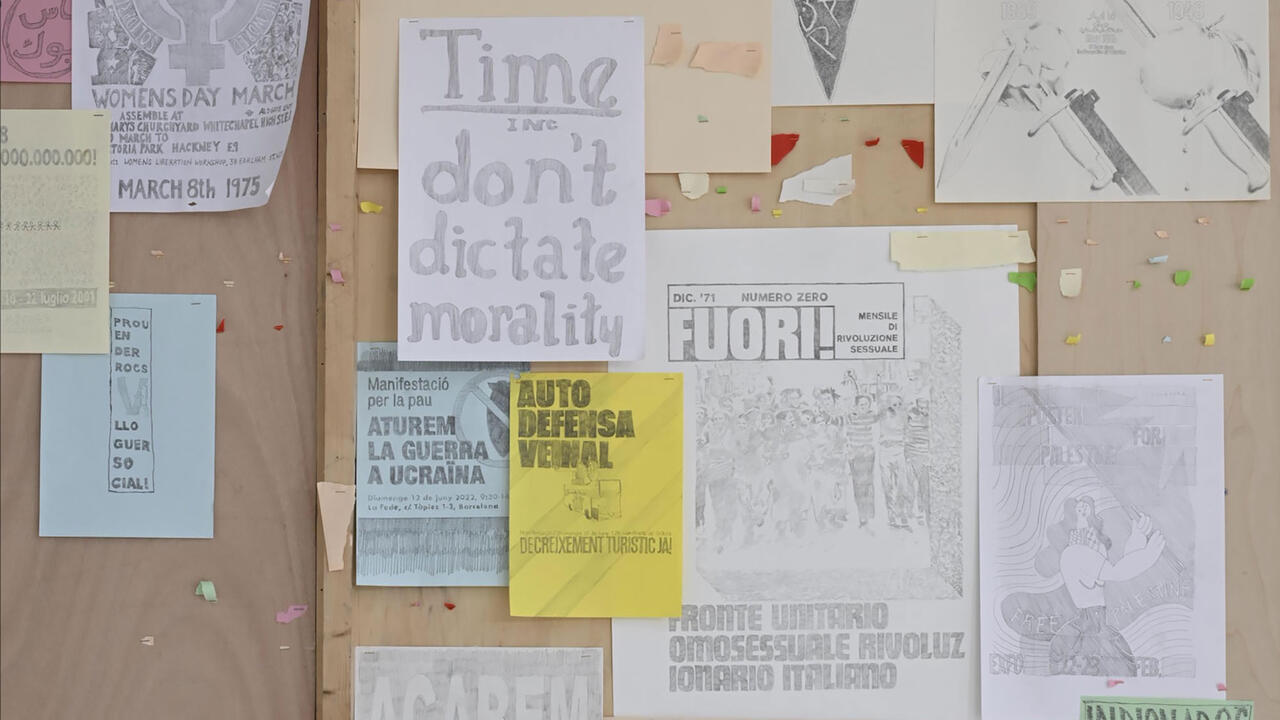2nd Canary Islands Biennial
Various Venues, Las Palmas de Gran Canaria and Santa Cruz de Tenerife, Spain
Various Venues, Las Palmas de Gran Canaria and Santa Cruz de Tenerife, Spain

Having opened in December 2008, the second edition of the ‘Canary Islands Biennial: Art, Architecture and Landscape’ just managed to scrape in two, rather than three, years after its 2006 debut. Following several blows – the death of the first edition’s curator, Antonio Zaya, in 2007; the departure of his successor–brother, Octavio Zaya, and Rosina Gómez-Baeza from the helm – the avuncular Director, architect Juan Manuel Palerm Salazar, presided over what might have otherwise been classified as a one-off subtropical exhibition. The first edition encompassed seven islands of the Canarian archipelago; wisely, the second edition was restricted to the two most populous islands, Gran Canaria and Tenerife. Yet the use of only urban venues, and, more controversially, the conspicuous lack of any public art works, was a curious state of affairs for a biennial ostensibly about landscape.
‘Silence’ was the flimsy overall title and theme, with two wordy sub-themes: ‘Immersions. Landscape of Networks: Systems, Meshes and Structures’ (incorporating eight Las Palmas de Gran Canaria venues) and ‘Scenes and Scenarios. Paradoxes of Wellbeing: The Consumption of the Imaginary and the Imaginary of the Consumption’ (seven Santa Cruz de Tenerife venues). Palerm further partitioned the conceptual framework with a technocratic system of keyword matrices, sporting corners labelled ‘abstraction’, ‘país (country/side)’, ‘production’ and ‘consumption’, along with sixteen sub-terms. The linking of the latter, according to concerns supposedly represented by every venue, generated an origami-like diagram for each.
The architectural component of the biennial featured a swathe of uncontextualized project proposals for vague interfaces between landscape and architecture, presented as display boards or digital slideshows. Renderings featuring Photoshopped figures strolling by development A, technical plans of waterfront-masterplan B, or cross-sectioned terrain-analysis of park C, etc., are the endemic stock-in-trade of architect-client presentations or bid tenders. Yet letting such sclerotic material loose as exhibition content – especially when illegibly scaled to a monitor – at worst functions as a symbolic indication that something smart and architectural is happening elsewhere. Likewise, the countless models, statistical maps and aerial views of the Canaries often just lent a territorial atmospheric to the displays.

Several of the venues were hampered by shoddy installation and malfunctioning videos. Some dodgy design decisions and mishaps led, in the Infecar venue (a trade fair hall), to black vinyl sheeting ‘walls’ surrounding empty tables or yawning gaps of space. Carsten Nicolai’s noise-cancelling sound work invertone (2007) had yet to come to life among the corrugated plastic displays and light tables of the cavernous Espacio Cultural El Tanque (a former oil storage tank). However, the displays at the Centro Atlántico de Arte Moderno, and the Tenerife Espacio de las Artes (a delightful light-filled Herzog & de Meuron building completed in 2008) generally fared better. The latter also hosted the strongest works: Paraíso Cansado (Tired Paradise, 2008–9), a specially commissioned video installation by Dias & Riedweg, set within sand dunes that function as a vast gay and swingers cruising area near the mega-resort of Maspalomas; and Julian Rosefeldt’s Sin Límite (Without Limit, 2009), also a new work for the occasion, composed of footage from Western film set in the US, but actually shot in the Canaries.
Despite these highlights, the biennial team seemed to treat the exhibition display as a somewhat delegitimized discursive format. The programming of a large number of workshops and seminars during the spring might have lead to suspicions that that the ‘real’ dialogue and interdisciplinary exchange was meant to take place elsewhere. All too often, works of art merely bolstered the purported analytic vein of the map-led ‘installations’ of the biennial team, like illustrations in an encyclopedia. Ángel Luis Aldai’s photograph of a container port, for example, (El Silencio de la Grúas, The Silence of the Cranes, 2009), represented a self-evident critical reflection on global infrastructure.
The sub-exhibition ‘Periphery’ – featuring photographs by Montserrat Soto, Sergio Belinchón, Gabriele Basilico and others – did muster a palpable sense of what this reflection might actually involve. Wide-angled images of highway construction in Xiamen, China, or tower blocks in Benidorm exemplifying the nagging proposition of human activity as an ugly blight on the supposedly harmonious natural world, nevertheless left a sourly moralistic taste in the mouth. A biennial about landscape should already have plenty at stake in terms of defining something other than art of the ‘outdoors’. Yet works of art were too often pressed into service as a cypher for ‘imagination’. How else could one explain the stale inclusion of abstract paintings by Juan Uslé and Sean Scully? By raiding the ‘landscape of the imagination’ territory – as did another sub-exhibition entitled ‘Plain Air. Extraordinary Landscapes’ – this biennial sometimes risked painting landscape as the most benign of metaphors.























